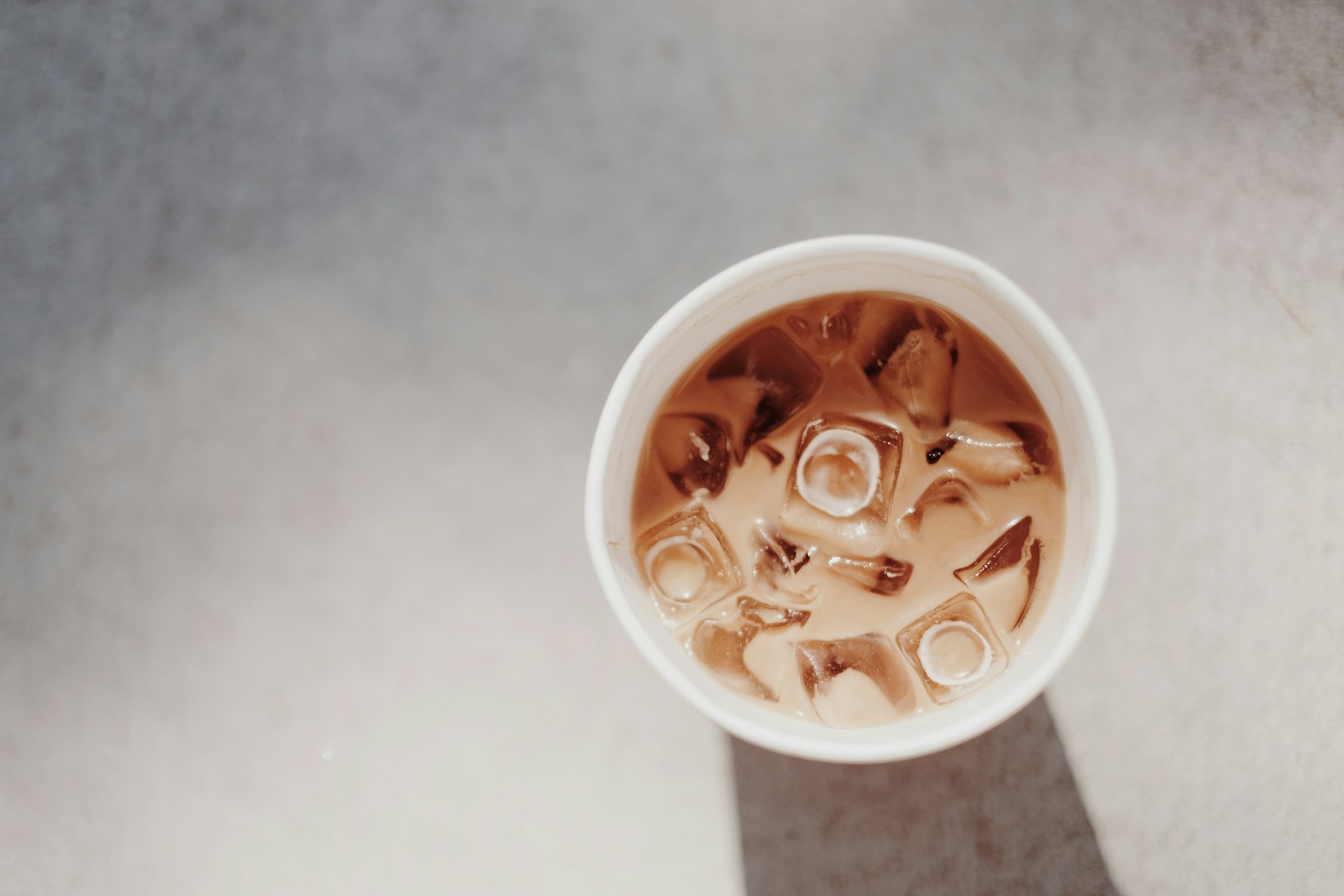If you’re an ardent coffee fan, you’ve probably found yourself engaged in the energetic debates about cold brew versus iced coffee. Particularly, perhaps you have found yourself wondering just which of these cooling beverages packs the higher caffeinated punch? Is it the smooth and deeply flavored cold brew, or perhaps, the classic, refreshing iced coffee?
One thing’s for certain, understanding the caffeine content in these drinks is crucial to regulating your intake and enjoying your coffee to its fullest. And that’s exactly what this article is here to help you with.
Table of Contents
Let’s plunge into the world of cold coffees, exploring the icy trek of caffeine from bean to cup. Prepare to become your own kitchen barista, armed with the knowledge and appreciation of your perfect coffee blend.
What is Iced Coffee?
Iced coffee, as it aptly indicates, is your regular cup of coffee poured over ice. This classic drink is not just a refreshing summer delight but also a quick way to get your caffeine fix on a warm day. What gives iced coffee its charm is the ease of its preparation: traditional coffee is brewed, then cooled, and ready to be served over ice.
Hot brewed coffee, when served in iced form, presents you with vivid acidity and a taste that is effortlessly distinct, albeit sometimes diluted by the melting ice cubes.
There’s some technical consideration attached to it as well—while brewing, careful attention is needed to prevent over-extraction, which can lead to a bitter taste.
Read: Cold brew tastes bitter? Why and How to Fix it Now
Iced coffee’s caffeine content largely depends on the brewing method and the amount of coffee grounds used.
Generally, a 16-ounce serving of iced coffee can contain anywhere from 150 to 200 milligrams of caffeine. However, it’s important to note that the caffeine content can be lesser in an iced coffee as the ice dilutes the coffee concentration. So, if you’re someone seeking a strong caffeine kick, iced coffee might fall a little short of expectations.
The Caffeine Count: How is it Calculated?
You may be wondering how we determine the amount of caffeine found in your favorite iced beverages. To quantify caffeine content, scientists utilize a method known as High-Performance Liquid Chromatography (HPLC). This process separates, identifies, and quantifies each component in a mixture, such as the caffeine in coffee.
In layman’s terms, imagine you’re observing a marathon. The HPLC acts like a race official who can identify each runner (or coffee component), single out the fastest ones (like caffeine), and measure their speed (or quantity).
However, there are some important considerations to keep in mind. Firstly, not all beans are created equal. The species of the coffee plant, its growing conditions, and the methods of processing and brewing all impact caffeine content.
For instance, darker roasts often contain less caffeine because the roasting process reduces caffeine levels. Secondly, serving size matters. A small but concentrated shot of espresso might contain as much caffeine as a larger, diluted iced coffee.
This integration of science into your coffee discussion might seem complex, but it’s essentially how we understand the caffeine counts in various coffee types. So, the next time you raise your glass of iced coffee or cold brew, you’ll have a better idea of the science that helps invigorate your mornings.

Caffeine in Cold Brew and Iced Coffee
Before we delve into the specifics, it’s imperative to understand that the caffeine content in your coffee isn’t constant. It can fluctuate based on several factors such as the blend and roast of your beans, the coffee-to-water ratio, and the brew time. But let’s focus on the comparison at hand – cold brew versus iced coffee.
Perhaps you’ve heard the rumor that cold brew packs a bigger caffeine punch. Well, you’re not completely off track. Cold brew is often steeped for a longer period, and, by default, uses a higher coffee-to-water ratio. This method can lead to a higher caffeine content.
However, keep in mind that this isn’t an intrinsic attribute of cold brew. It’s more about the brewing process and ratio used rather than the temperature of your coffee.
| Coffee Type | Brewing Time | Coffee-to-Water Ratio | Typical Caffeine Content |
|---|---|---|---|
| Cold Brew | 12-24 hours | 1:5 | 100-200mg/ 8oz |
| Iced Coffee | 2-5 minutes | 1:15 | 95-165mg/ 8oz |
On the other hand, iced coffee starts its life as a regular hot brew before it is cooled and served over ice. The iced coffee’s brewing process, which is generally quicker and uses a lower coffee-to-water ratio, often results in less caffeine compared to cold brew.
Read: Does Cold Brew has more caffeine than regular coffee
However, an important aspect to remember is the dilution factor. Cold brew, with its rich and concentrated nature, is often served with water or milk, diluting its caffeine content.
Similarly, your iced coffee, when poured over ice, also experiences some dilution as the ice melts. So even though cold brew might start off with more caffeine, the final caffeine content that finds its way to your system would probably be a lot closer between the two than you’d initially think.
Conclusion
Let’s dive back into our original question: Does cold brew have more caffeine than iced coffee? The caffeine content in coffee is not static, and it can greatly differ based on several factors, such as the type of beans used, the roasting process, the brewing method, and the dilution level.
As we explored the two types of preparation, it became apparent that cold brew usually contains more caffeine than iced coffee.
This is due to its extended brewing time, where it steeps for 12 to 24 hours and the higher coffee-to-water ratio. This potent concentrate, which defines the essence of a cold brew, can thus impart a higher caffeine content when compared to its counterpart.
If you’re a caffeine aficionado aiming for a stronger buzz, you might be inclined toward the cold brew. If you have a sensitive palate and prefer a lighter and refreshing taste with a hint of acidity, you might stick with iced coffee. Ultimately, it’s all about finding the right balance between flavor, strength, brewing craft, and your personal preferences!


Leave a Reply